Drum Grooves & Ear-Training – Spirit Music Meet-Ups
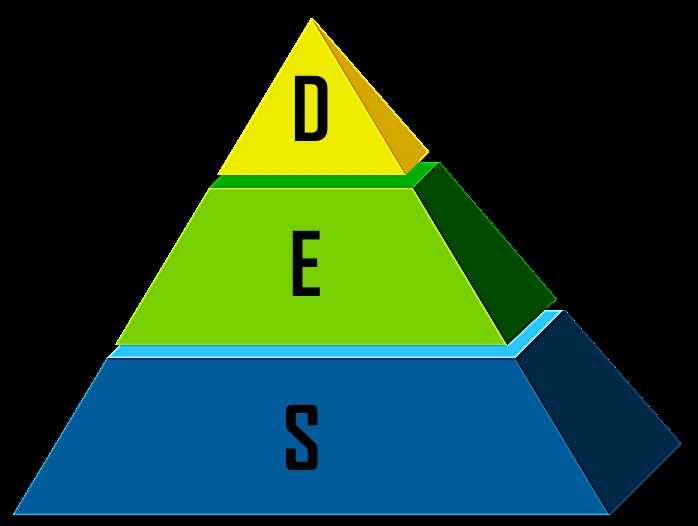
Groove is Master! S.E.D. = Support, Embellish, Dialogue. As a musician, if you S.E.D. it well, you will stay out of the D.E.S.
Drum Grooves & Ear-Training YouTube Playlist
Video – Intro to Spirit Music Meetups
SUBSCRIBE to our YouTube Channel to get the latest videos!
Follow us on GETTR, the fastest-growing free-speech Social Network in the world!
All of our Media info, photos, and videos
Please comment on the bottom of any page following our BLOG Etiquette Guidelines.
Some of these are really old recordings, so it’s best to use headphones or really turn the volume up to hear everything I am saying but especially to be accurately distinguish between the sounds of the different parts of the drum-set in order to train your ear accurately !!!
Note: On your phone, PDF documents may only open if you choose the “Save, Replace, or Keep Both” option and then it will be downloaded and notify you of this on the top of your screen. Open it there or in your Downloads folder and it will give you the option to Open with Adobe Acrobat, Drive, or some other PDF app you have installed on your phone. If you watch the associated video, it will open in another tab/window so that you can easily bounce back & forth between the PDF doc and the video. If your screen is big enough you can even arrange the windows next to each other!

Click on Pic to watch video: Groove is Master! It’s 60-70% of what a drummer should be doing! Support, Embellish, Dialogue (S.E.D.) well and you will stay out of the Dept. of Economic Security (D.E.S.)
Get into the Groove and Stay in the Pocket:
“Supporting” or “Locking In” to the Music’s Groove is 60-70% of what the Drummer does, thus the bottom of the pyramid above. This means exactly mimicking (“Locking In”) or slightly-simplifying to still “Support” the other instruments in these imitating ways: 1) The repetitive high-pitches or the most common bases note-value in the whole band played by your Time-Keeping hand(s) to Support the Time-Feel, 2) the loudest high-pitched accents played by the Snare-Drum and optionally Hi-Hat foot as Backbeats or a variation of them, 3) the repetitive part of the Bass Guitar or Left-Hand lower-notes of a Keyboardist played by the Bass-Drum, 4) any loudest or repetitive mid-range notes can optionally be imitated tonally on the Tom-Toms, as in many Latin, Afro-Cuban, and other World styles. So the “Groove” is the loudest, most prevalent, repetitive part of the music that the Drummer is Supporting.
Add 20-30% “Embellishment or Enhancement” to the Groove with ghost-note “Fill-ins” of the smallest “holes” in the Groove to create Internal Phrases with “Energy-Rhythm Contours” (see below) – Watch the video
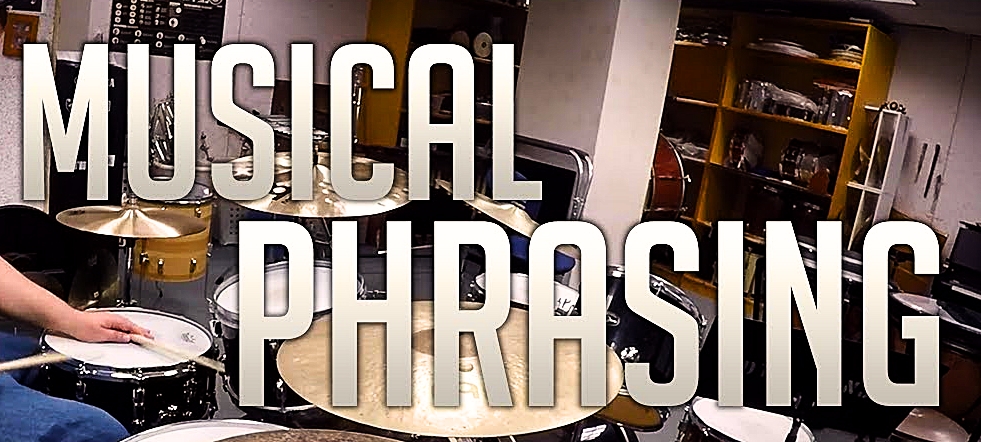
This section is played on a Snare-Drum and a Low-Tom to simulate a Bass Drum. This illustrates the Filling-in of extra notes in a measure to create Internal Phrasing that changes the Rhythmic Contour which thus correspondingly changes the Energy Contour. It’s very important to understand the FEELing you get from these. You will be doing the same in Drum-Set Beats further below on this page.
Rhythmic-Energy Contours based on Note-Density creates Internal Phrasing:
Learn more about Adding 20-30% “Embellishment or Enhancement” to the Groove with ghost-note “Fill-ins” of the smallest “holes” in the Groove to create Internal Phrases with “Energy-Rhythm Contours” (see below) – Watch the video
Video: Mini-Release, Downbeat Echo: 1+2 3 4
Video: Big, Half-Bar Release 1+2+3 4
Video: Big Mac or Bell Curve: 1 2+3+4
Video: Over-the-Bar-Line-Phrasing or Dip: 1+2 3 4+
Video: Cosine Wave – 1+2 3+4 “We Will Rock You”
Video: Backbeat Echoes, Sine Wave: 1 2+3 4+
Video: Shuffled 1/8-note, Busy Feel: 1 a2 a3 a4 a
Video: Shuffled Cosine Wave “We Will Rock You”: 1 a2 3 a4
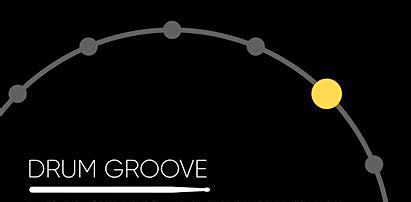
General techniques for making Drum-Set Beats that Groove:
See also Genres & Styles for specific Drum-Set Grooves
PDF doc: Melody vs. Ostinato in a Drum-Set Groove – Watch the Video
Video: Drum-Grooves- p. 34 Gleaning from Drumstick Control, Jeff Moore – Building Independence
Video – 22PWG: Pumping the straight or swung 1/8-notes in Rock and Shuffle Time-keeping
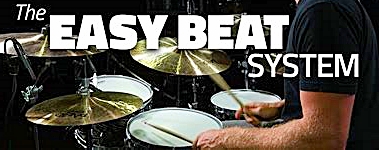
Easy Drum-Set Grooves with Zeke Para on Guitar:
Slow Jazz-Swing Drum-Set Comping on Snare & Bass Drum
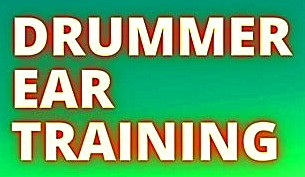
Ear-Training MP3s & Videos to learn key Drum Grooves:
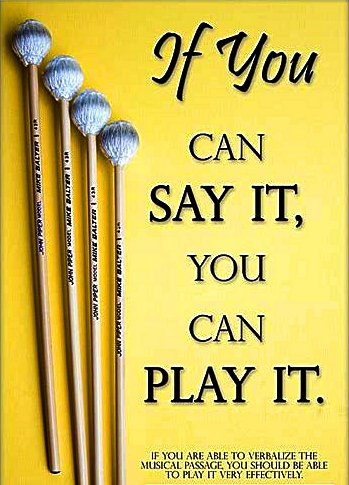
PDF doc: Please read this Counting & Singing Method – While you watch the Video
Making music is an “inside job!” You first have to get music “inside” you to be able to get it “outside” of you with your drumming. In order to be physically coordinated to drum, you must first get mentally coordinated! After teaching drums 25 years, I found the fastest way to learn – and the closest to real-world composition in a band – is by using both your left brain to COUNT the rhythms and your right brain to SING them, and it’s so important to do this out of your mouth because all those moving parts use so much more of your brain! As you COUNT & SING you are “putting the spotlight” on the “singer at the front of the stage” and your body will auto-magically “back up that singer” who is you – just like a band does for a show! I teach “Focus is power. Focus is fire,” because just like a magnifying glass can focus scattered sunlight into a pinpoint of fire, your COUNTING & SINGING will help focus past so many distracting thoughts to succeed more quickly at your drumming.
It’s crucial in playing with other musicians to quickly recognize REPEATED patterns of sound, the definition of “rhythm” or “Groove,” and be able to come up with a beat that primarily Supports the band’s Groove (mimics all or part of it) and secondarily Embellishes (or enhances) it. After playing this Groove for 3 measures or bars, you have created expectation in the listeners, so now you can surprise them a bit in the 4th bar with more Embellishment, or even stop the Groove with the band and fill in the break with a drum fill on the snare and/or around the toms. This is Dialogue – listening for a hole in the conversation and answering back, though you may have to wait 8 or 16 bars to get to the end of the Groove before it repeats that section of the music or goes to a new one! I teach that if you S.E.D it well in your music, you will stay out of the lines at the D.E.S. (Department of Economic Security) for food stamps!
Just as when learning how to repeat back any language, you have to hear drum Grooves SLOWLY enough over and over, then verbally repeat back what is being said – over and over until you have MEMORIZED it and the music is “inside you.” Then teach your body how to reproduce those sounds with the drums. I teach that “If you can say it, you can play it!”
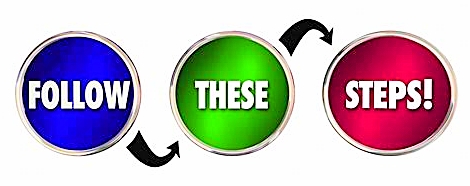
- Select a Beat # from below with its corresponding Total Rhythm (i.e., all limbs combined) left-brain Counting on the top line followed by right-brain Singing on the bottom line. These Counting & Singing descriptions are only there to help you “see and say” the Beat until you finally can just “hear” the Beat. For example, using the Counting & Singing Legend below, the Straight, 1/4-note Time-Groove, Beat 83 from page 2B, has the Counting 1 e – a 2 – – – 3 e – a 4 – + – and the Singing Toom Ba – Ba Cha – – – Ti Ba – Ba Cha – Ba – , which could be written out like this:
____HH/Ride Time: 1 2 3 4
____SD: 2 4
____BD: 1 e a e a +
- Count & Sing along with me on the MP3 player’s sound file, using the Legend below, until you memorize the sound pattern.
- Play your *Time-keeping Hi-Hat (HH) or Ride with your “strong” lead-hand while Counting & Singing: If you’re right-handed, use your RH, otherwise LH.
- If your “weak” hand plays the Snare Drum (SD) as a repetitive part (i.e., an ostinato, commonly on the backbeat counts 2 & 4), you should add this into the Total Rhythm while Counting & Singing.
- Now that you are first mentally coordinated to think, Count, and Sing the Total Rhythm while Time-keeping, you can play the Bass Drum (BD) with your foot as you say its part louder, while you are still saying the Total Rhythm softer.
- Now Count & Sing only the “groove” portion (BD + SD) of the Beat, thus no longer including the lone *Time-keeping HH Ticks or Ride Tings. Just let them fill in the “holes” or “gaps” in the actual “groove” to maintain the Time-keeping.
- Now, if the SD rhythm is simply a steady, ostinato part of the Time-keeping as in #4 above, you can think of the BD as primarily the Groove and Count & Sing only this – as if it were the sole melody and everything else was were part of an ostinato system (i.e., the other limbs each contributing an ostinato that combines together).
- Only until you can play consistently at a slow tempo with these MP3 sound files without a mistake should you then play without the sound files and start speeding it up. If you make a mistake, slow down so you don’t make the mistake again and just end up ingraining the mistake into your memory deeper, so that it makes it harder and harder to play it correctly. The definition of insanity is to do the same things over and over that created the problem in the first place and then expect different results!
- All the 1/8-note Straight-Time Counting can also be Swung or Shuffled by shifting the “+” (And) Simple Off-beats further out to the lazy “a” of an 1/8-note Triplet: “1 e a,” so that “1 + ” becomes “1 a.” All the 1/16-note Straight-Time subdivisions below can also be Swung or Shuffled by leaving the “+” (And) Simple Off-beats alone but shifting the Jerk “e” and the Lazy “a” Off-beats of “1 e + a” further out as shown in this 1/16-note Triplet: “1 e e + a a.” Because Triplet “e” and “a” counts are Artificial Music Notation different than Binary “e” and “a” counts, at slower speeds I may day “de” and “da” instead.

Use this 4/4 (4, 1/4-note) Meter – Counting & Singing Legend:
Counting Legend:
PDF doc: Please read this Counting & Singing Method – While you watch the Video
At slower tempos for more accuracy, you can softly count (or whisper) in a short, staccato fashion all the counts and the missing “-” subdivisions.
1 – 2 – 3 – 4 – = Long, legato 1/4 (quarter)-notes, NOT counting the Straight (Binary) 1/8 (eighth)-note Simple Off-beat “+” (And) counts but simply thinking them as your stretch your voice out for the 1/4-notes: “Oneeee Twoooo Threeee Fouuur.”
1 + 2 + 3 + 4 + = Short staccato Straight 1/8-note counting sounds like “One and Two and Three and Four and.”
Straight-Time Mix: 1 + 2 – 3 – 4 + sounds like “One and Twoooo Threeeee Four and.”
If Swung or Shuffled Time, 1 – a 2 – – 3 – – 4 – a sounds like “Oneeee ah Twoooooo Threeeee Fouuur ah,” or count everything staccato with the missing “-” subdivisions quietly.
1 – – – 2 – – – 3 – – – 4 – – – = Long, Legato 1/4-notes, NOT counting the Straight (Binary) 1/16 (sixteenth)-note Off-beat “e + a” counts.
1 e + a 2 e + a 3 e + a 4 e + a = Short, staccato, Straight 1/16-note counting sounds like “One eee and ahh Two eee and ahh Three eee and ahh Four eee and ahh.”
Straight Mix: 1 e – – 2 – + – 3 – + a 4 – – a sounds like “One eeeeeee Two – and – Three – and ahh Fouuuur ahh,” or count everything staccato with the missing “-” subdivisions quietly.
If Swung, 1 – e – – – 2 – – + – – 3 – – + – a 4 – – – – a sounds like “Onnne eeeeeeeee Twoo Annnd Threeee Annnnd Ah Fouuuuuuurrrr ah,” or count everything staccato with the missing “-” subdivisions quietly.
Singing Legend:
PDF doc: Please read this Counting & Singing Method – While you watch the Video
Ti= *Time-keeper Tick on Hi-Hat (HH) or Ting on Ride (see #3 and #6 in the “Process” above) with your “strong” lead-hand.
Ta = Tap on SD with your “weak” hand (see #7 in the “Process” above) – on the MP3 sound files, if I accidentally say “Cha” I mean “Ta” as written for the Beat.
Ba = Bass Drum. I also teach this as “oom” since it sounds like “doum,” a common bass sound on a doumbek drum.
Tam = Tap on SD + oom on BD
Toom = *Time-keeping Tick + BD oom, which add high-pitched Time-keeping “cut” to the low-end of the BD
Cha = *Time-keeper Tick + SD Ta = “TTa” creates a thicker Ta, sounding like “Cha”
Choom = *Time-keeper + LH Cha + Bass Drum oom
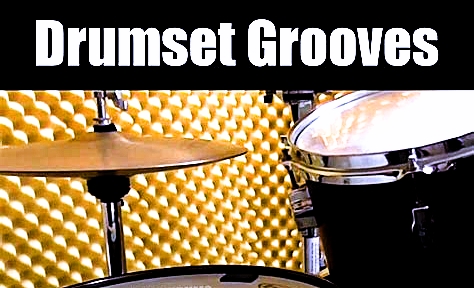
Basic Time-Keeping Beats to ‘Support’ the Band’s Groove:
Basic Straight or Flat Time-Feels:
Time 1: Intro of Subdivisions of Time (Beat), which is the 1/4-note. The Time-Keeper is not the “Groove,” which is the Bass-Drum (BD) & Snare-Drum (SD)
1 2 3 4 BD + SD Groove Only (no Time-Keeper)
Ba Ta Ba Ta
You can play the “Ta” with the Right-Hand (RH) or Left-Hand (LH) or alternating, so RH on 2 and LH on 4 or vice-versa.
Same thing but now you can play Flams on 2 & 4, all lR or all rL or alternating lR rL. Think of the “-” as space or the length of each of 1/4-note count.
Time 1a: 1 – 2 – 3 – 4 –
Ba – Ta – Ba – Ta
Bass-Drum on 1 & 3 gives it a 2-Beat/Pulse Feel or 2-Feel that I just mark as “2F.” This “Low-Hi-Low-Hi” sound is a back-and-forth, swaying, or dance Feel.
Time 1b: 1 – 2 – 3 – 4 –
Ba – Tam – Ba – Tam –
Bass-Drum on 1 2 3 4 is called “4 on the Floor” or a 4-Beat/Pulse or 4-Feel that I just mark as “4F.” This driving or head-banging pushes the Beat “forward” for driving, throbbing Feel great for solidifying Metronome Time and building up energy.
Time 2: 1 2 3 4
Toom Cha Toom Cha
1/4-note steady Time-Keeping with a 2-Feel “swaying” Groove under it, great for “Rock Roll Rock Roll” Hard Rock, Country Rock, “Oom-Pa” Folk Rock or Polka, and at higher speeds Punk.
Same thing, but at beginning I mistakenly said “Ta” when I meant “Cha”
Time 3: 1 2 3 4
Toom Cha Toom Cha
I mistakenly called this Time 2.
Time 2b: 1 – 2 – 3 – 4 –
Toom – Ta – Toom – Ta
There is no Time-Keeper on 2 & 4 so the Hands are just alternating R L R L or L R L R (If left-handed). This has less energy than “Time 3” and can be played much faster for say Punk.
Time 2c: 1 – 2 – 3 – 4 –
Toom – Choom – Toom – Choom –
Bass-Drum is “4 on the Floor, 4-Beat/Pulse, 4-Feel, 4F” and the Time-Keeper, Snare, and Bass all lining up on 2 & 4 for a loud, thick sound combining “Cha” with “Oom/Ba” to create “Choom.” This is very heavy, driving, Metronome-reinforcing, throbbing “Rock Roll Rock Roll” House Rock beat.
Time 3: 1 + 2 + 3 + 4 +
Toom Ti Cha Ti Toom Ti Cha Ti
1/8-note Time-Keeping with a “Rock Roll Rock Roll” Groove creates a “Rock-n Roll-n Rock-n Roll-n” 2-Feel, swaying, dance, Classic Rock or Pop beat.
Time 4: 1 e + a 2 e + a 3 e + a 4 e + a
Toom Ti Ti Ti Cha Ti Ti Ti Toom Ti Ti Ti Cha Ti Ti Ti
1/16-note “Locomotion” Time-Keeping with a 2-Feel Groove for Medium-Tempo Funk, slow Rock (ballads for slow dances). Use less wrist and more fingers to go faster!
Time 5: 1 e + – 2 e + – 3 e + – 4 e + –
Toom Ti Ti – Cha Ti Ti – Toom Ti Ti – Cha Ti Ti
2 1/16 – 1/8-note “Trotting Horse” Time-Keeping used in Funk-Rock Fusion and Techno (open the Hi-Hat on the “+”s. However, in Techno it’s often a 4-Feel). Try singing “Jingle Bells!”
Time 6: 1 – + a 2 – + a 3 – + a 4 – + a
Toom – Ti Ti Cha – Ti Ti Toom – Ti Ti Cha – Ti Ti
1/8 – 2 1/16 notes “Galloping” Time-Keeping used in Funk-Country Fusion and Country-Western like “Rawhide” and “Bonanza.”
If you count in 1/2-Time as 1 2+ 3 4+|1 2+ 3 4+| as in Reggae (like “Trenchtown Rock” by Bob Marley), the Snare is now only on count 3, thus having “half” of the normal 2 & 4 counts, giving it the illusion that it’s 1/2 as fast.
Time 7: 1 – – a 2 – – a 3 – – a 4 – – a
Toom – – Ti Cha – – Ti Toom – – Ti Cha – – Ti
Dotted 1/8 – 1/16 note Shuffle, good in slow Shuffles for a more jerky feel than an 1/8-note Triplet Shuffle. These are the “loping” accents you feel in a Samba.
Basic Straight, Off-beat Time-Feels:
Time 14: 1 + 2 + 3 + 4 +
Ba Ti Ta Ti Ba Ti Ta Ti
Simple Off-Beat Time-Keeping. You can open the Hi-Hat on the “+” counts.
You can count in Half-Time 1 2 3 4 | 1 2 3 4 | with the Snare on the 3 counts for Half-Time Rock, fast Disco, fast Funk-Rock, and of course Reggae.
Time 15: 1 – + a 2 – + a 3 – + a 4 – + a
Ba – Ti Ti Ta – Ti Ti Ba – Ti Ti Ta – Ti Ti
This is the Off-Beat Time-Keeping version of “Galloping” Time 6 beat, for a more “open” version of this. Use your fingers to go faster! I use it to create a “Laz-a is Blues-a” version of Time 14 beat.
If you count in 1/2-Time as 1 2+ 3 4+|1 2+ 3 4+| as in Reggae it sounds like “Trenchtown Rock” by Bob Marley, the Snare is now only on count 3.
Time 16: 1 e + – 2 e + – 3 e + – 4 e + –
Ba Ti Ti – Ta Ti Ti – Ba Ti Ti – Ta Ti Ti – (It sounds like I’m saying “Cha” but it’s “Ta”)
This is a more “open” version of the “Trotting Horse” Time 5 beat. I use it to create a “Jerk-e is Funk-e” version of Time 14 beat. Open the Hi-Hat on the “+”s for a faster 2-Feel Techno.
Time 17: 1 – + – 2 – + a 3 – + – 4 + a
Ba – Ti – Ta – Ti Ti Ba – Ti – Ta – Ti Ti
Combining Time 14 followed by Time 16. I often hear this as a Reggae variation when counting in 1/2-Time as 1 2 3 4+ | 1 2 3 4+|.
Time 18: 1 – + a 2 – + – 3 – + a 4 – + –
Ba – Ti Ti Ta – Ti – Ba – Ti Ti Ta – Ti –
This is the opposite phrasing from Time 17. Again, I hear this often counted in 1/2-Time for Reggae. Experiment which Off-Beats you will play on an open Hi-Hat. I threw a Fill in here to see if you can come back in on time. Toward the end I experimented with the Bass-Drum without losing the Time.
Time 19: Mix, 1 – + a 2 e + – 3 – + – 4 – + –
Ba – Ti Ti Ta Ti Ti – Ba – Ti – Ta – Ti –
Now you are combining “Galloping” with “Trotting Horse” to create an “+ a 2 e +” internal Phrase that Sets-Up and Echoes count 2. It sort of has a “Bell Curve” or “Big Mac” Rhythmic-Energy contour.
Time 20: Mix, 1 – + – 2 e + – 3 – + a 4 – + –
Ba – Ti – Ta Ti Ti – Ba – TiTi Ta – Ti –
Now you are combining “Trotting Horse” with “Galloping” but now the internal Phrases are smaller as an Echo of 2 and Set-Up of 4, giving it a Sine Wave Rhythmic-Energy contour.
Basic Swung, Rounded, or Triplet Time-Feels:
Time 8: 1 e a 2 e a 3 e a 4 e a
Toom Ti Ti Cha Ti Ti Toom Ti Ti Cha Ti Ti
Video – 1/8-note Triplets Beat with a 4-Feel BD
1/8-note Triplets Beat with BD on every RH for 1/4-note Triplet Feel
Time 9: 1 – a 2 – a 3 – a 4 – a
Toom – Ti Cha – Ti Toom – Ti Cha – Ti
Time 10: 1 – – 2 – a 3 – – 4 – a
Toom – – Cha – Ti Toom – – Cha – Ti
Time 11: 1ee+aa2ee+aa3ee+aa4ee+aa
ToomTiTiTiTiTi ChaTiTiTiTiTi ToomTiTiTiTiTi ChaTiTiTiTiTi
Time 12: 1 – e+ – a2 – e+ – a3 – e+ – a4 – e+ – a
Toom – TiTi – TiCha – TiTi – TiToom – TiTi – TiCha – TiTi – Ti
Time 13: Summary of Time 2-12
Go to the Next Pages of Ear-Training Grooves:
Page 1B for adding 1/8-note “+” Off-beats into 1/4 note Straight-Time Grooves
Page 2 for adding Jerk-e and/or Laz-a Off-beats into 1/4-note Straight-Time Grooves
Page 2B for combinations of these Grooves
Page 3 for 1/8-note Straight-Time Grooves
Page 3D for adding Jerk-e and Laz-a BD
Thank YOU for visiting: Drum Grooves & Ear-Training
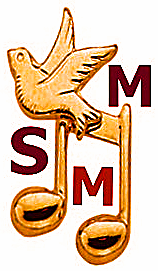

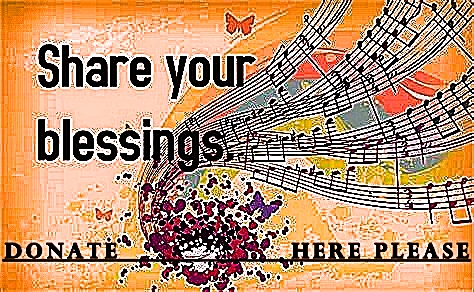
Leave a Reply